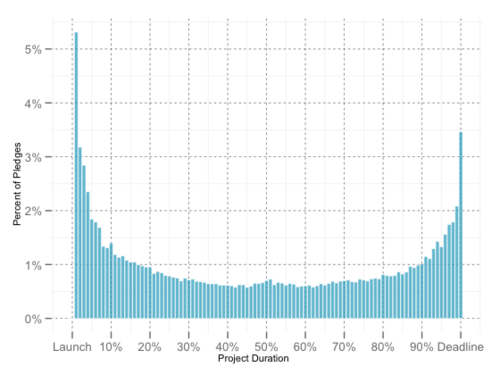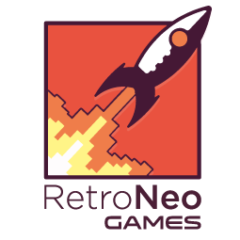
So at the end of May I did a post on Starfighter Inc. It had a Kickstarter campaign in progress and was selling itself as the spiritual successor to the X-Wing games. I disputed this claim, saying that a multiplayer focussed space deathmatch with Newtonian physics can’t feel much like X-Wing’s successor. I won’t repeat myself other than that but you can read the original article here if you wish.
Since then, the game failed in its Kickstarter campaign on June 6th 2015 (it was 90% funded, which on Kickstarter means you get 0% of the pledged money) and I just want to look at some things we can learn from the failure. This isn’t a general how-to on Kickstarter. This post is more or a follow-up article on Starfighter Inc itself. I’ve never run a KS campaign myself (yet) and I’m not an expert, but I do want to learn from some mistakes that we can observe.
It’s difficult to say why something fails on Kickstarter other than to say “because they didn’t raise enough money”. Perhaps others agreed with my own assertion that this game isn’t truly a spiritual successor to X-Wing and so weren’t interested enough to support. My previous article got right into this so I won’t do so again here, but this is surely at least part of the reason. If you’ll allow me to assume that this is at least partly true here, we reveal the first lesson.
LESSON #1 : UNDERSTAND WHAT YOUR TARGET AUDIENCE WANTS, OR TARGET A DIFFERENT AUDIENCE.
Impeller’s early press for the game focussed on telling us that David Wessman was creating a new X-Wing game in all but name. Then they went on to say that the game was like “World of Tanks meets Counterstrike in space”. These are two very different things and different people play those different games. I would surmise that the people who heard about the game were largely the targeted X-Wing fans who then decided that the game wasn’t really for them, whereas if they’d taken a difference marketing approach and targeted the actual World of Tanks and Counterstrike players more, they might have found their true target audience. Instead they sort of split their attention and shot at the wrong target, at least in part.
LESSON #2 : THE GAME IS MORE IMPORTANT THAN WHO’S MAKING IT. TRADE ON YOUR NAME ONLY IN GOOD FAITH.
Again, in my previous article I said that I didn’t care if David Wessman or Jack Mamais were on the team so much, because they weren’t making X-Wing or Crysis. A good team is important, sure. We can know that the names behind this project have delivered good stuff in the past, but it can’t make someone more interested in a game if they weren’t at least curious already.
Worth noting is Bloodstained: Ritual Of The Night, the spiritual successor to Castlevania being made by Koji Igarashi. It recently raised $5.5m on Kickstarter, ten times more than it asked for, because people wanted to see another Castlevania game and one of its original chief architects was back to promise people that he’d deliver. So a name can matter, but I think more important is that people believe that that name will deliver the game that they’re after. Igarashi’s ‘interesting’ video did apparently hit all the right buttons and convince people that in trading on his name, he was also promising to deliver what people wanted, not something a little similar.
LESSON #3: SHOW GAMEPLAY! SHOW GAMEPLAY! SHOW GAMEPLAY!
This is by far the most important lesson to be learned here, and even the Impeller team admitted they neglected this to their detriment. I said before that the game looked to be very early in development and as such it was hard to visualise or get excited by. At the time when I said that they were already half way through their Kickstarter campaign and the most gameplay to be seen was the video below, with the rest of the funding video dedicated to showing us interviews, concept art, the office, and physical Star Wars spaceship models.
Does that video excite you? No, me neither. That’s not enough to get money out of me, sorry.
So very late in the campaign they released a little more gameplay. It’s still very little to go on, but it’s at least approaching the bare minimum of what we’d like to see to know that the game is making progress and to give us an idea of what to expect. Presumably the rock music pumping away was to get their on-the-fence backers pumped up and to reach for their credit cards. View the later gameplay video here.
Now that’s a bit better. But the huge problem is that most people never saw that. IF they heard about the game and checked it out early on, and if they weren’t sold on what they saw, they likely wouldn’t have come back to check it out again and therefore they’d never have seen this video. This should have been there from the start.
Gameplay! Gameplay! Gameplay!

What you see here is a typical Kickstarter funding pattern. You can see that most projects get a lot of their funding on the first and last days of the campaign as people are excited when it’s new, or realise they have to get around to getting out their wallet by the end. This tends to hold true whether the project winds up successful or not.

Starfighter’s graph isn’t so radically different from the norm, but you can see that the first and last days aren’t quite as high as they might have been. You can put all sorts of reasons on this. I would say that this graph supports my assertion that seeing gameplay is very important for the prospective backer. It wasn’t there at the start of the campaign and so the day 1 spike wasn’t as high as it could have been. The little gameplay later shown in the second video (shown above) wasn’t all that impressive either and so when people got their email reminders on the last day of the project (assuming they clicked ‘remind me’ on their first visit) not enough of them were sufficiently impressed to push the campaign over the $250,000 they were seeking.
LESSON #4 : KICKSTARTER IS NOT THE BE-ALL AND END-ALL
Getting a successful Kickstarter under your belt is almost seen as a prerequisite to making an independent game these days, but it’s not. All of the traditional means of funding a product still exist; namely bank loans, publishers, angel investors and even personal savings. Also, products (like Dimension Drive) can come back to Kickstarter and pass on their second attempt. Frank n’ John by Ireland’s bitSmith Games didn’t pass their Kickstarter in 2014 but continued development and are set to release their game sometime in the second half of 2015. They had a recent blog post about their journey which you can check out here.
Indeed, there are actually benefits to not passing Kickstarter. You’ve gotten some loyal followers from the campaign, you’ve gotten public exposure, but you’re now not beholden to a public community who examine your every move and need constant updates to know that you’re working. The amount of emails I receive from projects I’ve backed telling me that they’ve made a new model or hired a new cleaner are things that take the developer’s time just to assure me that they’re still working on the game I paid them to support. Passing Kickstarter can be a real time sink and it’s often not even in exchange for enough cash to make the game. Just for enough to prove interest to other investors who pay the lion’s share.

To finish, getting back to Starfighter Inc specifically, I’d like to point out that they’re still in development and will be finishing the game. On June 6th, the same day that their Kickstarter ended, they went on Steam Greenlight which asks Steam users if they would buy the game if it were made available. There’s no monetary commitment on Greenlight. Starfighter Inc passed it a few days later.
Creative Director Jack Mamais has said “I’ve been working on it for two years and I don’t like to work on something and not finish it. So we’re going to finish it. As long as it takes”. I think this is encouraging. They had said that the meagre $250,000 they were asking for was to hire artists to finish the models and they expected the game to take 6-9 months longer to finish if they passed Kickstarter.
Given all of that. I fully expect to see the game out in mid 2016 and I look forward to playing it.
